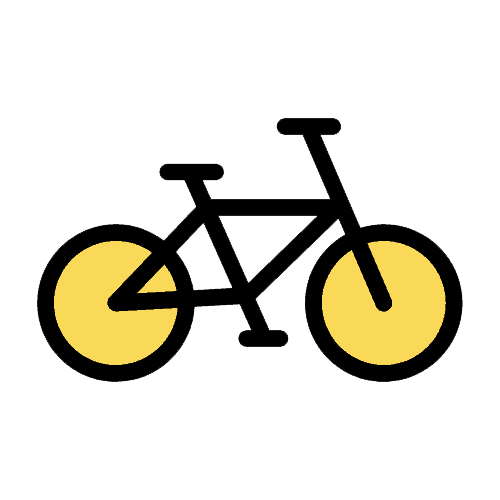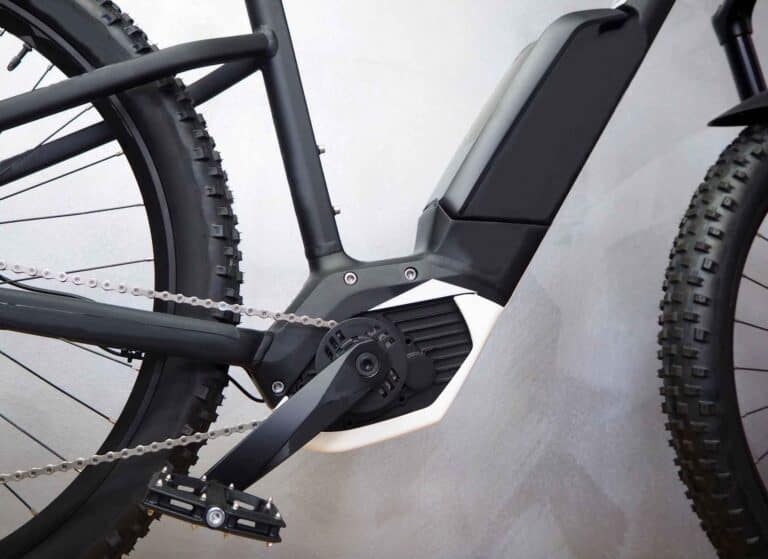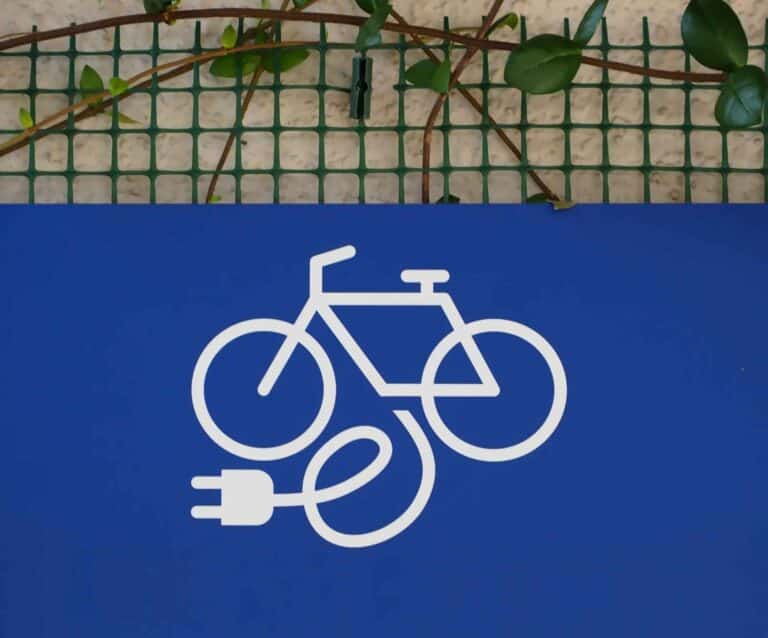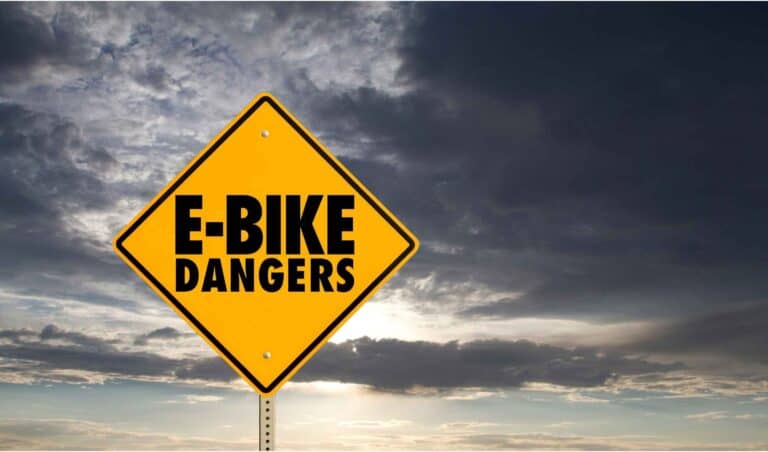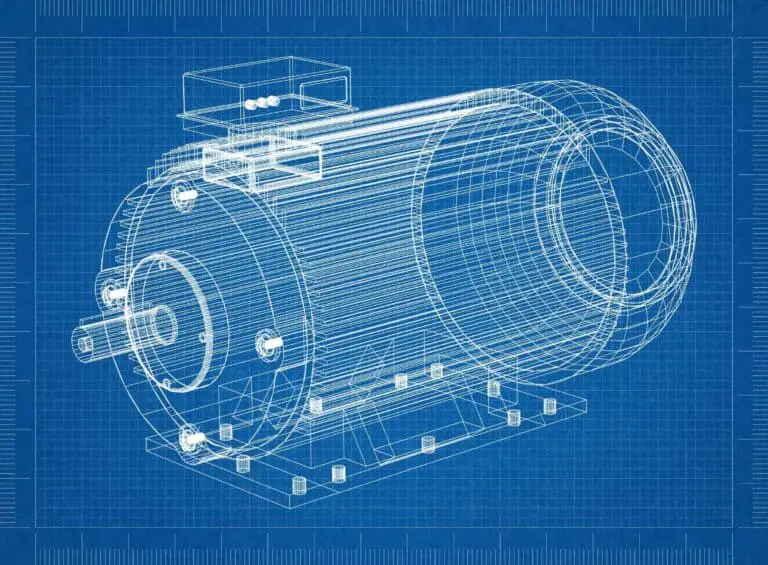How Fast Electric Bikes Go (Top Speed Vs Watts Vs Price)
I have ridden different electric bikes with varying motor power, and I observed that their top speeds also differ. So, I wondered, how fast do electric bikes really go?
As a general rule, street-legal electric bikes can reach speeds of up to 28 mph (45 kph), while some electric bikes, particularly those designed for off-road use with more powerful motors, can exceed this limit.
In this article, we will dive into the top speeds of different e-bike classes, the top speeds of e-bikes with various motor powers, the legal speeds of e-bikes in general, and answer some inquiries about electric bike speeds. We will also discuss if spending more on an eBike will lead to faster speeds.
How Fast Do Electric Bikes Go?
The maximum speed that each electric bike can reach primarily differs based on the motor power. Technically, with higher watts, your electric motor can draw more energy from the battery, providing more power to propel the wheels. However, several factors could significantly affect the speed of an electric bike. For instance, if you are using a pedal-assist system on your electric bike, the speed at which the rider pedals may also contribute to a higher speed. Nevertheless, even though an e-bike can be ridden much faster, depending on its class, an e-bike can only be ridden within a specific range allowed.
Top Speed of Electric Bikes Depending on Class
| eBike Classes | Maximum Speed |
| Class 1 | 20 mph (32 kph) |
| Class 2 | 20 mph (32 kph) |
| Class 3 | 28 mph (45 kph) |
Class 1 Electric Bike
In most states in the United States, electric bikes are generally categorized into three different classes: Class 1, Class 2, and Class 3. It’s important to note that electric bikes may have pedal-assist systems, throttles, or both.
Class 1 electric bikes are e-bikes that can only be ridden with a pedal-assist system. They do not have a throttle, so the motor engages through pedaling. With Class 1 e-bikes, riders are limited to a maximum speed of 20 mph (32 kph). Exceeding this speed limit may lead to legal consequences.
Most electric bikes offer different pedal-assist levels, typically ranging from 1 to 5, with lower numbers indicating lower pedal assistance and higher levels providing greater assistance. Some electric bikes may use modes such as eco, tour, turbo, etc., instead of numeric levels. You can set the assistance level before you ride, and the motor will provide the specified assistance as you pedal.
Here are some examples of electric bikes under the Class 1 category:
| Electric Bikes | Motor Power | Top Speed | Cost |
| Pedego Elevate Electric Bike | 250 watts | 20 mph (32 kph) | $8,995 |
| Vvolt Alpha S Electric Bike | 350 watts | 20 mph (32 kph) | $1,499 |
| Velotric T1 ST E-Bike | 350 watts | 20 mph (32 kph); 25 mph (40 kph) if Unlocked | $1,099 |
| Trek Verve+ 2 Lowstep | 250 watts | 20 mph (32 kph) | $2,279.99 |
| Ramblas eMTB | 250 watts sustained power, 750 watts peak power | 20 mph (32 kph) | $2699 |
| 700C Hyper City Electric Bike | 250 watts | 20 mph (32 kph) | – |
Class 2 Electric Bike
Class 2 electric bikes are e-bikes that have pedal-assist and throttle functionalities. This means you have the option to use either pedal assistance or the throttle to engage the motor. With pedal assistance, you activate the motor by pedaling, while with the throttle, you can engage the motor by twisting the handlebar or pressing a thumb-sized button. The type of throttle on electric bikes varies depending on how they are manufactured.
If your electric bike falls under this category, you may be able to ride it at speeds of up to 20 mph (32 kph), similar to Class 1 electric bikes. Regardless of your e-bike class, it’s essential to always follow the law regarding electric bikes.
Additionally, as mentioned, pedal-assist systems offer different assistance levels you can choose from. However, with the throttle, you can directly ride your electric bike fully electric. No pedaling is needed, resulting in less hassle and more energy saved. If you’d like to learn more about the difference between pedal-assist and throttle, you can check out our article ‘What is the Difference Between Pedal Assist and Throttle?”
Here are some electric bikes from the Class 2 category:
| Electric Bikes | Motor Power | Throttle Type | Top Speed | Cost |
| Radster Trail | 750 watts; 100 Nm torque | Half-twist throttle | Ships as Class 2; can be switched to Class 1 or Class 3 | $1,999 |
| Aventon Soltera 2 Electric Bike | 350 watts | Thumb throttle | 20 mph (32 kph) | $999 |
| CITYPRO E-43 Electric Bike | 500 watts (nominal), 907 watts (peak) | Twist throttle | 20 mph (32 kph) | $1,099 |
| Alpha II Electric Bike | 350 watts | Removable throttle | 20 mph (32 kph) | $1,699 |
| Vika+ Flex Electric Bike | 500 watts | Thumb throttle | 20 mph (32 kph) | $1,499 |
| RadExpand™ 5 Electric Folding Bike | 750 watts | Half-twist throttle | 20 mph (32 kph) | $1,599 |
Class 3
The third category is Class 3 e-bikes. These electric bikes have motors that provide pedal assistance for speeds up to 28 mph (45 kph), making Class 3 the category with the highest maximum speed limit among the three. However, Class 3 e-bikes also come with more restrictions compared to Class 1 and Class 2 e-bikes.
For instance, in most states, there are specific age requirements for riding Class 3 electric bikes. Additionally, in some areas, these electric bikes may not be allowed in standard bicycle lanes. Therefore, it’s crucial to understand the rules and regulations in your local and state jurisdictions to ensure compliance.
To learn more about the age requirements to ride electric bikes in each state in the United States, you can check out our article ‘eBike Age Limit to Ride Electric Bike in Each State.’
Here are some examples of Class 3 electric bikes you can purchase:
| Electric Bikes | Motor Power | Top Speed | Cost |
| CTY e2.2 Electric Bike | 250 watts (Bosch Performance Line Sport, the smart system) | 28 mph (45 kph) | $3,699 |
| CrossCurrent X Step-Through | 750 watts (Bafang motor) | 28 mph (45 kph) | $1,799 |
| Ride1Up Café Cruiser Electric Bike | 750 watts | 28mph (45 kph) on pedal-assist, 20 mph (32 kph) throttle | $1,095 |
| Priority Current Electric Bike | 500 watts | Shipped as Class 1-20 mph (32 kph), but switchable to Class 3- 28 mph (45 kph) | $ 3,299 |
| Ranger Fat Tire Electric Bike | 750 watts | 28 mph (45 kph) | $1,199 |
| Aventure.2 Step-Through Electric Bike | 750 watts | 28 mph (45 kph) | $1799 |
Beyond these categories, there are electric bikes intended for off-road use. These bikes can typically exceed the allowable speeds of e-bikes from any class. Many of them feature powerful motors, and their speeds can often be unlocked to make them faster. Most of these electric bikes are generally considered as mopeds.
However, in terms of legality, moped electric bikes may not be permitted to be ridden on public lanes and roads. Their restrictions differ from those of any e-bike class. So, if you’re seeking an e-bike with maximum speed, a moped e-bike could be a great option. However, before deciding whether to purchase a moped e-bike or not, it’s crucial to carefully understand the rules and regulations mandated by your state and local laws.
Top Speed of Electric Bikes Depending on Motor Power (Watts)
| Motor Power (in Watts) | Top Speed |
| 250 watts | 15 mph-20 mph (24 kph-32 kph) |
| 350 watts | 18 mph-25 mph (29 kph-40 kph) |
| 500 watts | 20 mph-25 mph (32 kph-40 kph) |
| 750 watts | 20 mph-28 mph (32 kph- 45 kph) |
| 1000 watts | 22 mph-45 mph (35 kph-72 kph) |
250-Watt eBike Top Speed
A 250-watt electric bike can reach speeds of 15-20 mph (24-32 kph). This motor and the allowable speed make the electric bike legally usable in most states. Furthermore, it’s suitable for both daily commutes and leisure rides.
350-Watt eBike Top Speed
A 350-watt electric bike can reach speeds of 18 to 25 mph (29 to 40 kph). Compared to 250W e-bikes of the same quality, a 350W e-bike is slightly more powerful, resulting in slightly different performances, even though the maximum speed difference is minimal.
500-Watt eBike Top Speed
A 500-watt electric bike can reach speeds of 20 mph to 25 mph (32 kph to 40 kph). Electric bikes with this motor power perform much better compared to those with 250W and 350W motors of the same quality. With a 500W motor, an electric bike can conquer more challenging terrains.
750-Watt eBike Top Speed
A 750-watt electric bike can reach speeds of 20 to 28 mph (32 to 45 kph), with some models capable of going even faster. However, due to speed restrictions, these e-bikes are typically limited to the allowable speeds. Some electric bike companies offer options to unlock the speed settings, allowing riders to reach the electric bike’s maximum potential speed.
Moreover, a 750W electric bike performs better compared to 250W, 350W, and 500W models. The 750W e-bikes are perfect for off-road use, allowing you to conquer challenging terrains much more easily. This motor power is also suitable for e-bikes intended for carrying heavy cargo or for heavy riders. With a 750W motor, climbing hills becomes significantly easier.
If you would like to learn more about the differences between 500W and 750W e-bike motors, check out our article “Electric Bike 500W vs 750w (Don’t Be Fooled by the Difference).”
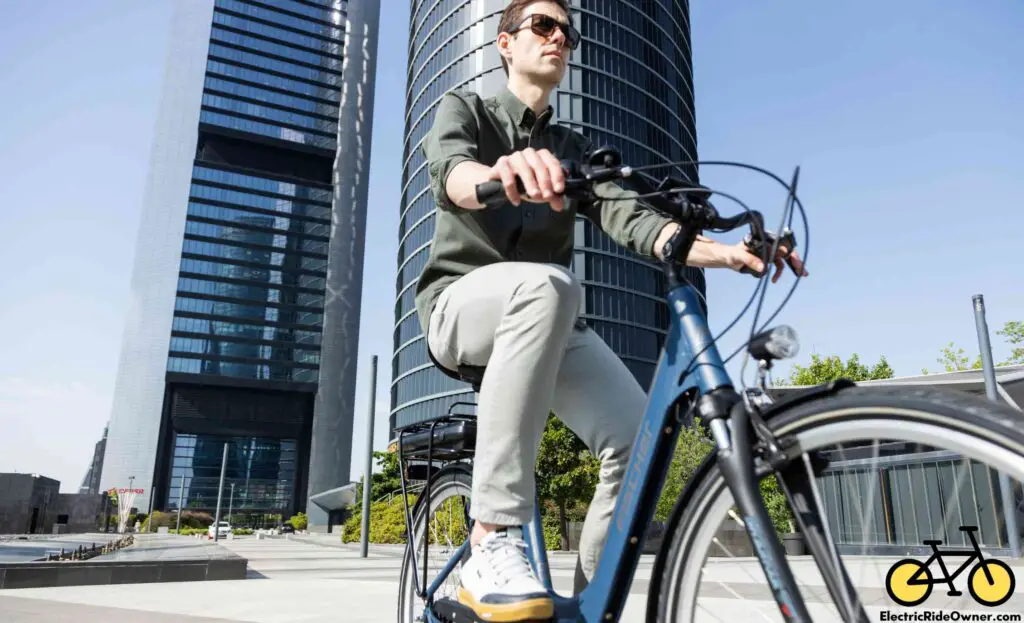
1000-Watt eBike Top Speed
A 1,000-watt electric bike can reach speeds from 22 to 45 mph (35 to 72 kph). However, most states in the U.S. only allow electric bikes with motor power not exceeding 750W. Therefore, a 1,000W e-bike may not be legally ridden in many states, though this depends on the specific rules and regulations of your local and state jurisdictions, as e-bike laws vary between states.
A 1,000-watt e-bike is very powerful and is typically intended for activities that require significant power, such as off-road riding, mountain climbing, and other demanding uses. It is important to be aware of your local e-bike laws to avoid any legal consequences.
Top Speed of Electric Bikes Depending on Price
Technically, price does not directly affect speed, as price doesn’t determine how fast an e-bike can go. An electric bike is priced based on several factors such as components, features, quality, model, and brand. Of course, electric bikes with top-notch performance, efficiency, and quality are significantly priced higher. However, since e-bike speeds are significantly affected by motor power, those with higher power, which means faster speeds, can cost more compared to those with lower motor power. But this might not be true for all electric bikes, as several other factors may also influence the price. Thus, a higher price does not necessarily mean a faster electric bike.
Here are some electric bikes at different price ranges with varying motor power:
| Electric Bike | Price | Motor Power | Speed |
| Wildtan M-5600 | $2,599 | 1,000W | 28 mph (45 kph) |
| Ranger Step-Thru 2.0 Electric Bike | $1,199 | 750W | 28 mph (45 kph) |
| RadRunner 3 Plus Electric Utility Bike | $2,099 | 750W | 20 mph (32 kph) |
| Pedego Elevate Electric Bike | $8,995 | 250W | 20 mph (32 kph) |
| Vvolt Alpha S Electric Bike | $1,499 | 350W | 20 mph (32 kph) |
| CTY e2.2 Electric Bike | $3,699 | 250W | 28 mph (45 kph) |
| CrossCurrent X Step-Through | $1,799 | 750W | 28 mph (45 kph) |
What is The Top Speed of An Electric Bike?
On average, the top speed of an electric bike is about 20 mph (32 kph) to 28 mph (45 kph). The maximum speed that each electric bike may reach depends on several factors, which include the e-bike’s class and motor power.
Technically, the primary factor affecting the speed of an electric bike is its motor power. Usually, the higher the motor power, the higher the speed that electric bike can reach. However, since electric bikes have become widely used, they have been categorized into three classes, each with different speed restrictions. These classes are Class 1, Class 2, and Class 3.
Unlike traditional bicycles, electric bikes are equipped with a battery and motor to assist you on your cycling journey. They can also be equipped with a pedal-assist system, throttle, or both. E-bikes that fall under the Class 1 category engage the motor by pedaling. This means you have to pedal your electric bike for the motor to engage and provide the assistance you need, depending on your set pedal-assist level or mode. In this category, according to most state laws, you are only allowed to use pedal assistance up to 20 mph (32 kph). So, if you have a Class 1 e-bike and plan on riding it faster than 20 mph (32 kph), you should think twice to avoid facing any legal consequences.
The second electric bike class is Class 2. These electric bikes can be engaged by either pedaling or throttle. So, you have the option to ride your electric bike with pedal assistance or to ride it fully electric. Similar to Class 1 e-bikes, Class 2 electric bikes can only be ridden up to 20 mph (32 kph). Exceeding this speed may result in legal consequences.
The third class is Class 3 e-bikes. These electric bikes are ridden with pedal assistance and can reach a maximum speed of up to 28 mph (45 kph). Note that this e-bike class may have more restrictions compared to Classes 1 and 2, depending on your state laws.
To know the top speed of the electric bike you are interested in, you can always refer to its specifications. In most cases, the speed of electric bikes is listed in the specifications. However, if the speed is not provided, you can contact the seller for inquiries. Some electric bikes can be switched from one class to another. For instance, according to Priority Bicycles, their Current Electric Bike is shipped as a Class 1 e-bike with a top speed of 20 mph (32 kph). However, once delivered, the e-bike can be switched to a Class 3 electric bike with a top speed of up to 28 mph (45 kph).
Are E-bikes Fast?
As a whole, electric bikes are fast. With electric bikes, you can propel the wheels much more easily and quickly compared to traditional bicycles. Standard bikes can reach speeds similar to e-bikes, but you have to pedal more, which can result in leg fatigue.
Electric bikes are equipped with motors and batteries. The motor draws energy from the battery, making it much easier for the wheels to move. This significantly reduces the effort and energy needed to pedal, especially when going uphill or carrying heavy loads. As a result, leg strain is lessened, allowing for a more comfortable and less exhausting ride.
With electric bikes, accelerating becomes much easier, enabling you to travel to various places with ease and convenience. Since you don’t have to pedal hard to get the e-bike moving, tackling challenging terrains is much simpler. Additionally, many electric bikes come with throttle functionality. With a throttle, you can ride your bike fully electric without the need to pedal. Simply press a thumb-sized button or twist the throttle, and you’re ready to go! The throttle allows you to ride your e-bike like riding a motorcycle, making your ride more effortless and enjoyable.
Typically, electric bikes can reach speeds of up to 20 mph (32 kph), while some models can achieve speeds of up to 28 mph (45 kph). There are also more powerful electric bikes that can reach speeds as high as 45 mph (72 kph). These high-speed electric bikes are often designed for off-road use or private areas, as most states in the United States impose speed restrictions on electric bikes for public road use.
While many electric bikes comply with these speed limits, some companies manufacture e-bike models that allow you to unlock their maximum speed potential. However, doing so may render the bike illegal for use on public roads. It’s important to be aware of your local laws and regulations regarding electric bike usage to avoid potential legal issues.
In summary, electric bikes offer a fast, efficient, and comfortable mode of transportation. They provide flexibility and convenience in all forms of riding, whether you are commuting, exploring off-road trails, or simply enjoying a leisurely ride. E-bikes feature either pedal-assist or throttle systems, making cycling more accessible and enjoyable for everyone. If you are considering an electric bike, be sure to understand the specific features and legal requirements in your state to choose the best option for your needs.
How Fast Can an Electric Bike Legally Go?
On average, electric bikes can legally go up to 20 mph (32 kph) or 28 mph (45 kph), depending on their class. Classes 1 and 2 electric bikes can be legally ridden up to 20 mph (32 kph), while Class 3 e-bikes can be legally ridden up to 28 mph (45 kph).
Note that each state may have different speed restrictions for electric bikes. While the standard maximum speed is generally 20 mph (32 kph) for Classes 1 and 2 and 28 mph (45 kph) for Class 3 e-bikes, some regions might impose much lower speed limits. In addition to speed limits, there could also be age restrictions for riding electric bikes, and some states might require legal documents, such as licenses or registrations, to operate one. There may also be areas where e-bikes are not allowed to be ridden. Furthermore, Class 3 electric bikes may have additional restrictions.
Therefore, if you own an electric bike, it’s crucial to check the e-bike laws in both your local and state jurisdictions. This will help you avoid any legal issues and ensure that you are fully informed about the specific requirements and restrictions in your area. These rules and regulations are implemented to ensure the safety of riders and others during your electric bike journey. By understanding these laws, you can make the most of your electric bike while adhering to safety standards and legal guidelines.
Furthermore, to ensure safety, it is highly recommended to always wear a helmet. Although helmet use is not compulsory in some states, prioritizing your safety and the safety of others by wearing a helmet is advisable. For recommended helmets, you can check our article “Best eBike Helmet (Why You Need a Special Helmet for eBikes).”
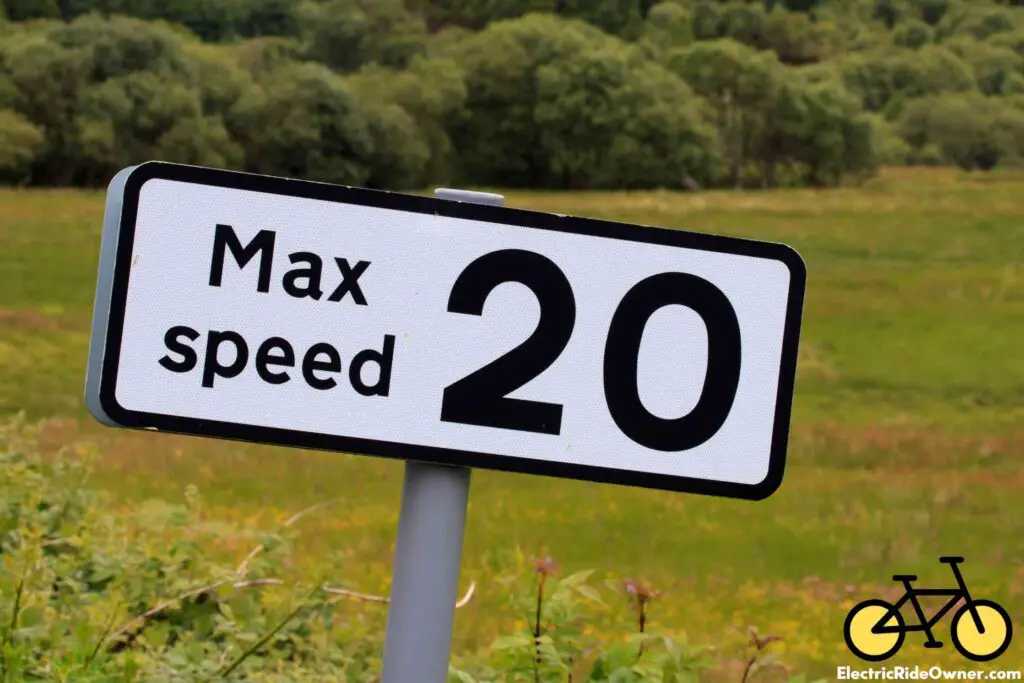
How Fast Do Electric Bikes Go Without Pedaling?
As a general rule, electric bikes can go up to 20 mph (32 kph) without pedaling. Electric bikes that can be ridden without pedaling are those equipped with throttles, and most of them fall under the Class 2 category.
Electric bikes may come with pedal-assist systems and throttles to make the riding experience more efficient and convenient. Those electric bikes equipped with a throttle can be ridden fully electric, meaning the rider does not need to pedal to engage the motor. With a throttle, you can ride your electric bike similar to a standard motorcycle. However, in most states, the use of a throttle is regulated, and electric bikes with this feature are typically limited to a maximum speed of 20 mph (32 kph), depending on your state and local laws. This is the maximum legal speed for these types of e-bikes, and exceeding this limit can result in legal consequences.
How Fast Can a 36V Electric Bike Go?
On average, a 36V electric bike can travel at speeds ranging from 20 mph (32 kph) to 28 mph (45 kph). This is typically the maximum speed limit for most bikes, but there are higher-end 36V electric bikes that can reach speeds of 32 mph (51 kph) or even higher.
The ’36V’ denotes the average operating voltage of an electric bike, sometimes referred to as the nominal voltage. Technically, an e-bike battery with a higher voltage means it can supply more energy to your electric bike motor, making your electric bike much faster. The most common voltages for electric bikes are 24V, 36V, 48V, and 72V. While higher voltage typically translates to faster speeds, electric bikes are designed to limit their speed due to regulations. However, some e-bikes allow you to unlock their speed to the maximum potential.
How Fast Can a 48V Electric Bike Go?
As a general rule, a 48V electric bike can range from 20 mph (32 kph) to 28 mph (45 kph) due to speed restrictions. Without restrictions, a 48V electric bike can reach speeds as high as 40 mph (64 kph).
In the United States, most states enforce speed limits for electric bikes based on their class. This means that regardless of the electric bike’s voltage, it typically has a maximum speed ranging from 20 mph (32 kph) to 28 mph (45 kph). However, certain manufacturers offer the option to unlock higher speeds for their e-bikes compared to the standard limitations. In such instances, a 48V electric bike has the potential to reach speeds of up to 40 mph (64 kph) or even greater. It’s important to note that the e-bike’s voltage is just one of several factors affecting an electric bike’s speed. Other factors such as motor power and rider weight also play a significant role. Therefore, if a 48V battery is paired with a high-powered motor, there’s a high probability that the speed of the electric bike will likely be faster.
To learn more about the differences between 24V, 36V, 48V, and 52V electric bikes, read our article ‘24V vs. 36V vs. 48V vs. 52V Electric Bike (The Clear Winner).’
“There are no speed limits on the road to success.”
-David W. Johnson
What is The Fastest Electric Bike?
As a whole, the fastest electric bike that we’ve encountered is the HPC Revolution XX. This electric bike can have a maximum speed of 70+ mph (112 kph). It is equipped with a special kind of motor, producing the highest RPM/V ever.
The Revolution XX, sold by Hi-Power Cycles, is an exceptional electric bike featuring a 750W motor with a top speed officially listed as 70 mph (112 kph), making it one of the fastest e-bikes available. It is equipped with a unique motor based on the Revolution motor launch. Additionally, it features a 150A BMS battery that provides a range of up to 100 miles (161 km) on a single charge. The bike boasts incredible components that make it efficient, powerful, and extraordinary. To learn more about the Revolution XX features, you can check here.
Moreover, this electric bike is shipped as a Class 2 electric bike to fully comply with speed restrictions in most states in the United States, which is about 20 mph (32 kph). This feature ensures that you can ride this electric bike legally in most states in the United States. However, upon delivery, you can unlock the speed of this e-bike if you plan on using it for off-road purposes. So, if you decide to use the bike to conquer challenging terrains, it is possible with this e-bike!
Unfortunately, only 20 units of the Revolution XX were manufactured, and it has already sold out. This electric bike was sold for about $20,000.
Below is a video review of the HPC Revolution XX electric bike.
What is The Fastest Folding eBike?
On average, the fastest folding electric bike that we have found is the Juiced JetCurrent Pro e-bike. This electric bike can go as fast as 30 mph (48 kph) on throttle only and 34 mph (55 kph) on pedal assist.
The Juiced JetCurrent Pro e-bike is equipped with a powerful NeoBlade Motor, delivering a nominal power output of 1,200 watts and a peak power output of 2,000 watts. It is initially shipped as a Class 2 electric bike, reaching speeds of 20 mph (32 kph). However, it can be configured to a Class 3 e-bike, allowing it to achieve speeds of 30 mph (48 kph) on throttle only and up to 34 mph (55 kph) on pedal assist.
Additionally, this e-bike boasts a high-capacity 50V 19.2Ah battery, offering an impressive range of up to 70 miles (113 km) on a single charge, ensuring extended riding enjoyment. The JetCurrent Pro also features a robust foldable frame capable of supporting a maximum weight of 300 lbs (136 kg). This design not only accommodates heavy loads but also allows for convenient folding and transport.
The Juiced JetCurrent Pro electric bike is priced at $2,299. It may not be the cheapest folding e-bike on the market, but with its high-quality components and incredible features, this price is justified. To learn more about the features of this electric bike, you can visit their website.
How Fast is a 250-Watt Electric Bike?
On average, a 250-watt electric bike can reach speeds of about 15-20 mph (24-32 kph), making it legal to be ridden in most states in the United States. These e-bikes are suitable for daily commutes and leisure rides.
Most states in the United States have motor power restrictions of 750W, so a 250W electric bike can be legally ridden. E-bikes with this motor should give you a speed of about 15-20 mph (24-32 kph). However, since there are different manufacturers of electric bikes, some may claim that their e-bikes can go higher than 20 mph (32 kph). Therefore, it is always best to check with the seller for any specific information you need.
Here are some electric bikes with 250W motor power:
| Electric Bike | Motor Power (in Watts) | Speed | Cost |
| HSD S8i | Bosch Active Line Plus (250W) | 20 mph (32 kph) maximum speed | MSRP $4,299.00 |
| Ghostrider Go! | Bosch Performance Line (250W) | 20 mph (32 kph) maximum speed | $2,899.99 |
| SCOTT PATRON eRIDE 920 BIKE BLACK | Bosch CX (250W) | – | $6,499.99 |
| Upstreet1 5.40 | Bosch Active Line Plus (250W) | 15.5 mph (25 kph) | $4,699 |
| Supercargo CL | Bosch Cargo Line (250W) | – | $5,999.99 |
How Fast Will a 500W eBike Go?
On average, a 500-watt electric bike can reach speeds ranging from 20 mph to 25 mph (32 kph to 40 kph). Electric bikes equipped with a 500-watt motor can be legally ridden in most states across the United States.
Electric bikes with a motor power of 500W can achieve higher speeds compared to 250W and 350W e-bikes of similar quality, especially if there are no speed restrictions. Typically, a 500-watt e-bike can reach speeds ranging from 20 mph to 25 mph (32 kph to 40 kph). However, some manufacturers produce 500W e-bikes that are much faster than this standard speed.
Additionally, a 500W e-bike finds it easier to conquer more challenging terrains. Furthermore, since the motor power restriction in most states is 750W, a 500W e-bike can be legally ridden.
Here are some electric bikes with a 500W motor.
| Electric Bike | Motor Power | Speed | Cost |
| Vvolt Pie Electric Bike | 500 watts | 28 mph (45 kph) | $4499 |
| XP 3.0 Black eBike | 500 watts | – | $999 |
| Velotric Discover 1 Plus | 500 watts | 28 mph (45 kph) | $1,299 |
| Sinch 2 Electric Bike | 500 watts | 20 mph (32 kph) | $1499 |
| Vika+ Flex | 500 watts | 20 mph (32 kph) | $1,499 |
How Fast Can a 1000W Electric Bike Go?
As a general rule, a 1,000-watt electric bike can reach speeds ranging from 22 to 45 mph (35 to 72 kph). Electric bikes with this motor power can go faster compared to those with motor powers of 250W, 350W, 500W, and 750W.
A 1000W e-bike is very powerful, surpassing models with 250W, 350W, 500W, and 750W motors. Technically, more watts mean faster speeds. It’s worth noting that the maximum allowable speed for electric bikes to be legally ridden is 20 mph (32 kph) for Class 1 and Class 2 e-bikes, and 28 mph (45 kph) for Class 3 e-bikes. Since a 1000W e-bike can exceed these standard speeds, it may not be permitted for use in public areas. However, there are 1000W electric bikes that are configured and shipped as Class 1-3 e-bikes. Therefore, if your state does not have motor power restrictions, then a 1000W e-bike with speeds of up to 28 mph (45 kph) can still be legally ridden.
Because a 1000W e-bike is so powerful, it performs better at conquering hills and challenging terrains. They also tend to accelerate faster, even with heavy cargo.
Here are some electric bikes with 1000W motor power:
| Electric Bike | Motor Power | Speed | Cost |
| ENGWE X24 Electric Bike | 1000W (nominal)1200W (peak) | 0-31 mph (0-50 kph) | $1,349 |
| Apex Sport | 1000W | – | $3,599.99 |
| SENADA SABER PRO Electric Bike | 1000W (nominal)1500W (peak) | 30 mph (48 kph) | $1,099 |
| RANDRIDE Forerunner – 1000W Electric Mountain Bike | 1000W | 33 mph (53 kph) | $1,949 |
How Fast Does a 2000W Electric Bike Go?
On average, a 2,000-watt electric bike can reach speeds of 40 to 45 mph (64 to 72 kph). With this powerful motor, the 2000W e-bike outperforms e-bikes with 250W, 350W, 500W, 750W, and 1000W motors in both performance and efficiency.
Note that the standard maximum allowable speed for an e-bike is about 20 mph (32 kph) to 28 mph (45 kph), and the standard maximum allowable motor power is 750W. This allows your electric bike to be legally ridden in most states in the United States. Since a 2000-watt e-bike is so powerful and fast, it would not be suitable for riding in public areas.
E-bikes equipped with a 2000W motor are intended for off-road and private use, especially for conquering challenging terrains. So, if you plan on purchasing an e-bike with this motor power, be aware of the rules and regulations on e-bikes in your local and state jurisdictions.
How Fast Can a 3000W eBike Go?
As a general rule, a 3000-watt electric bike can reach speeds of 40-50 mph (64-80 kph). Electric bikes with this motor power are extremely powerful, making them faster as well. These electric bikes are even more powerful compared to 250W, 350W, 500W, 750W, 1000W, and 2000W models.
With this much motor power, electric bikes are considered illegal to ride on public roads. This powerful motor is typically used on e-bikes intended for off-road riding. Since they can go very fast, always wear proper gear, such as helmets, to ensure your safety and the safety of those around you.
Moreover, always make sure that you know the electric bike laws in your local and state jurisdictions.
If you are interested to learn if your electric bike is street legal in your state, check out our article ‘Are Electric Bikes Street Legal (Detailed Info: All 50 States).’
